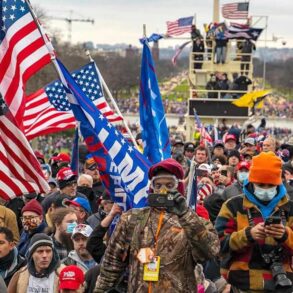SILENT NIGHT: 2 STARS. “a basic good vs. evil bullet ballet.”
 The title “Silent Night,” action icon John Woo’s first American film in twenty years, is a double entendre. On one hand it refers to the holiday season in which most of the action takes place, but it’s also a nod to the film’s construction. With no dialogue, it’s a quiet movie about a guy who makes a lot of noise.
The title “Silent Night,” action icon John Woo’s first American film in twenty years, is a double entendre. On one hand it refers to the holiday season in which most of the action takes place, but it’s also a nod to the film’s construction. With no dialogue, it’s a quiet movie about a guy who makes a lot of noise.
The movie begins with a bang as Brian Godluck (Joel Kinnaman), dressed in a Rudolph Christmas sweater and sleigh bell necklace, attempts to outrun two cars filled with gun toting bad guys. The odds are not tilted in his favor, and soon he is in hospital with a bullet-sized hole in his throat. Alive but unable to speak through shredded vocal cords, he’s lucky to be alive but doesn’t seem too happy about it.
Returning home with wife Saya (Catalina Sandino Moreno) it’s revealed he is not the only victim. Turns out, on the previous Christmas Eve a stray bullet killed their young son Taylor in the front yard of their Texas home.
Haunted by the loss of his son, Brian hits the bottle, spending his days drunk and disengaged, waiting for the police to get on the case. At an appointment with Detective Dennis Vassel (Scott Mescudi), Brian spots the Most Wanted posters for the men responsible for murdering his son.
It triggers something in him; a fierce need for revenge. He becomes a one-man army, builds up an arsenal, trains in self-defense, does surveillance on the baddies and writes “Kill Them All” on the calendar on Christmas Eve.
Those looking to “Silent Night” for the patented John Woo full-on assault action will be disappointed. After the pulse-racing opening sequence the movie becomes ninety percent set-up, leading to a generic shoot-out so dull it makes “My Dinner with Andre” seem exciting by comparison. A fight scene between Brian and a gang member is promising, but ultimately leads nowhere.
The gimmick, cutting all dialogue save for the odd police scanner buzz, radio news report or the self-defense videos Brian watches, works against the effectiveness of the storytelling. Woo’s poetic visuals are evident, although a tear that turns into a bullet feels a little heavy handed, but the lack of dialogue reduces the characters to one dimension.
Kinnaman’s vacillates between ennui and bloodthirsty, but not much in between. We don’t know anything about him and because he doesn’t speak, he doesn’t even get a cool, “what I do have are a very particular set of skills” speech.
But at least he has some range. The gang members are meat puppets, snarling bullet catchers with targets on their backs and nothing more. This is a basic good vs. evil bullet ballet, but some kind of character work might have gone a long way toward making us care about the people on screen and their stories.
“Silent Night” takes a long time to get where it is going, and once it gets there, isn’t worth the wait.
This post was originally published on this site be sure to check out more of their content.


